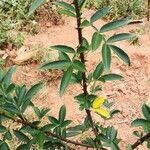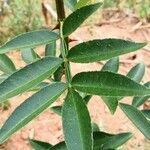| Therapeutic use
|
General tonic for rejuvenation (fruit), Antineoplastic agents (root), Fishes, poisonous (root), Abdomen (unspecified), Anodyne (unspecified), Diarrhea (unspecified), Dysentery (unspecified), Skin (unspecified), Vermifuge (unspecified), Chill (unspecified), Sore (unspecified), Ascariasis (unspecified), Ache(Stomach) (unspecified), Alexiteric (unspecified), Bite(Snake) (unspecified), Boil (unspecified), Carminative (unspecified), Inflammation (unspecified), Insecticide (unspecified), Larvicide (unspecified), Piscicide (unspecified), Rheumatism (unspecified), Stimulant (unspecified), Tetanus (unspecified), Ache(Back) (unspecified), Arthralgia (unspecified), Bruise (unspecified), Poison (unspecified), Toothache (unspecified), Burn (unspecified), Analgesic (unspecified), Astringent (unspecified), Earwig (unspecified), Emmenagogue (unspecified), Sudorific (unspecified), Spice (unspecified), Diuretic (unspecified), Dropsy (unspecified), Ecchymosis (unspecified), Kidney (unspecified), Lactorrhea (unspecified), Malaria (unspecified), Parasiticide (unspecified), Pectoral (unspecified), Spermatorrhea (unspecified), Stomachic (unspecified), Bladder (unspecified), Antidote(Varnish) (unspecified), Asthma (unspecified), Polyuria (unspecified), Preventitive (unspecified), Substance withdrawal syndrome (unspecified)
|




